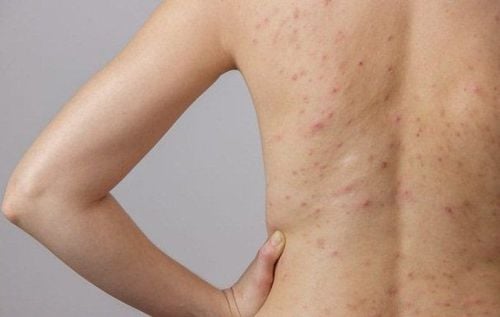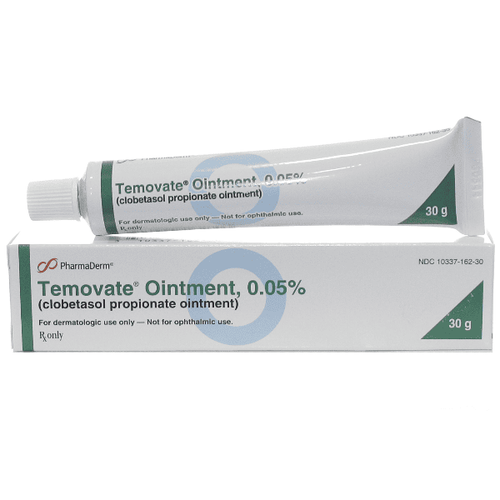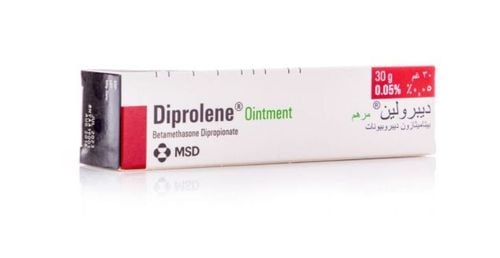This is an automatically translated article.
The article was written by Specialist Doctor I Le Thi Thu Hang - Dermatologist, Department of Medical Examination & Internal Medicine - Vinmec Hai Phong International General Hospital.Folliculitis is a common skin disease that is an inflammation of one or more hair follicles. It can be caused by bacteria, viruses or fungi. It occurs on any part of the body, except on the palms of the hands and feet. The disease affects people of all ages, especially adolescents and young adults.
1. What is folliculitis?
Folliculitis is inflammation of the superficial or deep part of the hair follicle. The disease affects many parts of the body such as the face, scalp, neck, back, armpits, outer surface of the arms, thighs, genitals, forearms and shins... Folliculitis is not dangerous but the disease causes pain, itching and discomfort. In severe cases of folliculitis, it can cause hair loss and scarring.Manifestations of folliculitis are papules, pustules, abrasions and scales at the neck of the hair follicle. Small, whiteheads in one or more hair follicles are also signs of folliculitis. In addition, patients also experience other symptoms such as: Itching in the inflamed skin, red spots, hairs that do not grow out but twist inside, causing itching in the hair follicles. The red nodules grow around the dense folliculitis area, causing cosmetic loss and affecting the patient's daily activities. When the hair follicle is abscessed, it will turn into a boil, more seriously, a cluster boil, pothole or inflammation of the subcutaneous tissue.
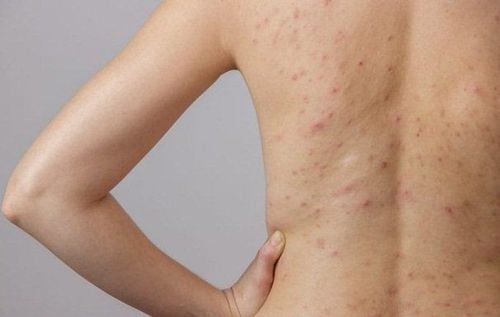
2. Body sites prone to folliculitis
2.1 Facial folliculitisFacial folliculitis caused by staphylococcus aureus, green pus bacilli, fungi, molluscum contagiosum, infection with Demodex folliculorum... in hair follicles. Manifestations of folliculitis on the face are red pimples, whiteheads, blackheads, itchy skin and redness, rough skin, ingrown and twisted facial hair.
Facial folliculitis including beard folliculitis. Folliculitis in the beard growth area is mainly caused by Staphylococcus aureus (Staphylococcus aureus), sometimes with simultaneous infection with gram-negative bacteria, filamentous fungi, herpes virus, Demodex infection causing rosacea-like lesions. The disease is often persistent, difficult to treat and easy to recur many times. The inflamed beard roots have red acne, when the acne breaks, there will be scratches and scabs. The blisters may be scattered or in clusters.
After facial folliculitis, the beard heals completely without leaving a scar, but it can leave a bruise that lasts for a long time. If the inflammation is severe, the infection spreads deep, causing an abscess or even a boil. In the case of an abscess, the damage to the hair follicle of the sebaceous gland can leave a scar after it heals. In addition to the beard, hairline on the nape, armpits, sideburns, pubic hair, ... can also have folliculitis caused by Staphylococcus aureus.
2.2 Scalp folliculitis
Scalp folliculitis is also known as folliculitis, folliculitis. The disease is common in people with oily scalp, working in hot, humid and polluted environments. The main cause of the disease is Staphylococcus aureus, Gram-negative bacteria and Trichophyton fungus.
Predisposing factors for hairline inflammation include: hot and humid climate, polluted environment, sweaty scalp, long-term use of immunosuppressive drugs or diabetes, chronic kidney failure , tuberculosis, immunodeficiency,... In cases of excessive shampooing, using shampoos with high anti-dandruff properties also lose the protective ceramide layer of the scalp, creating conditions for bacteria and fungi to penetrate.
Manifestations of folliculitis are small papules like millet seeds at the hairline, scaly, very itchy, growing a lot on the nape of the neck, on both sides of the sideburns. If the inflammation is severe, it can spread to the beard, eyelashes, armpit hair, and persist for many years. If the patient scratches a lot, it can cause secondary infection, causing impetigo, painful lymph nodes on both sides of the neck. Chronic folliculitis easily leads to neurasthenia, insomnia, irritability, memory loss,...
2.3 Vaginal folliculitis
Vaginal folliculitis due to many causes such as: vaginal birth is not clean, hair removal in the private area, the horny layer on the skin is too thick, due to locality (female sebaceous glands are more active during menstruation), due to allergies to area care products Closed or wearing underwear that is too tight, wet, ...
Patients with private folliculitis have symptoms: The private area is often itchy and uncomfortable, red spots or pimples with hair in the middle, acne may burst discharge, bleeding or pus, pain, burning in the intimate area,...
2.4 Back folliculitis
Back folliculitis is a condition in which the hair follicles in this area become infected by bacteria. , staphylococcus,... Causes of back folliculitis are: Congenital, improper shaving, hair removal (infective hair removal tools), poor personal hygiene, allergies or bacterial infections, ghosts. frequent contact with clothing made of rough materials, no absorb sweat,...
Manifestations of folliculitis in the back are: On the back appear many red nodules, there is an itchy, uncomfortable feeling in the back. If severe, the nodules will become boils, nails on the back, leaving dark spots, scars... Although the disease is not dangerous, if it is not treated properly and promptly, folliculitis will cause folliculitis. can develop into a chronic infection, causing an infection deep in the skin that can even spread to the lymph nodes and into the bloodstream.
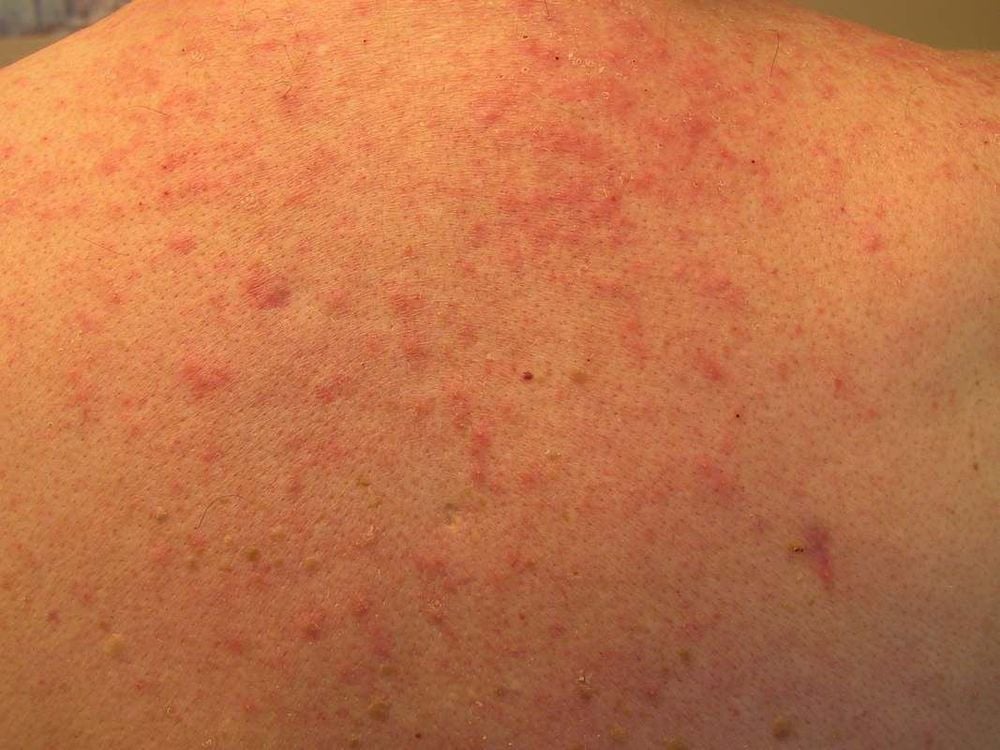
Folliculitis in the legs: Common in women who shave or wax their legs, mainly due to infection; Folliculitis in the buttocks: Mainly caused by staphylococcus, filamentous fungi.
3. Complications of folliculitis
Mild cases of folliculitis usually do not cause complications. Complications that occur with mild hair follicle infections are usually: Recurrence or spread to other sites or cause itching and scarring. But severe cases of folliculitis can cause many complications such as:Cellulite: Causes serious infection in the affected area, easily affects the tissues below the skin, spreads to the lymph nodes and blood; Boil: is an acute inflammatory condition that causes necrosis of the hair follicle and surrounding tissues. The lesion is a red papule in the hair follicle, swelling, heat, pain, after a few days of progress, the lesion turns pus in the middle to form a pus-filled nib. Scar: Severe folliculitis can leave bad scars, keloid scars, causing cosmetic loss; Destruction of hair follicles: Leads to permanent hair loss.
5. Measures to prevent recurrent folliculitis

To prevent the disease from recurring effectively , the patient should take the following measures:
Drink lots of water, eat a lot of fresh green vegetables and fruits to provide enough nutrients to help keep the skin healthy; Clean personal hygiene daily to avoid clogged hair follicles due to strong oil glands; Use suitable soaps, help reduce sebum on the skin, help open pores; Protect the skin against the harmful effects of chemicals, detergents with strong bleaching ingredients; Do not wear tight hats or tight clothing; Choose comfortable clothes, good sweat absorption; Change bed sheets regularly to remove sweat, dirt and parasites on them; Shave with a sharp blade and special shaving cream; Keep cleaning tools for shaving, hair removal, choose a good quality hair removal cream that does not hurt the skin. Folliculitis can appear in many skin areas on the body such as the scalp, face, armpits, legs, buttocks, private areas, ... Timely treatment of folliculitis helps prevent complications of the disease such as scarring, boils...
Doctor Thu Hang has over 10 years of experience in the field of dermatology. Especially experienced in the treatment of adult and pediatric skin diseases, sexually transmitted diseases, autoimmune and rare skin diseases. The doctor has obtained certificates and university degrees at home and abroad such as: Degree I - Dermatology, Hanoi Medical University, DFMS Degree - Dermatology, University of Paris XIII, France before becoming a doctor. dermatology at the Department of Internal Medicine, Vinmec Hai Phong Hospital today.
Please dial HOTLINE for more information or register for an appointment HERE. Download MyVinmec app to make appointments faster and to manage your bookings easily.







